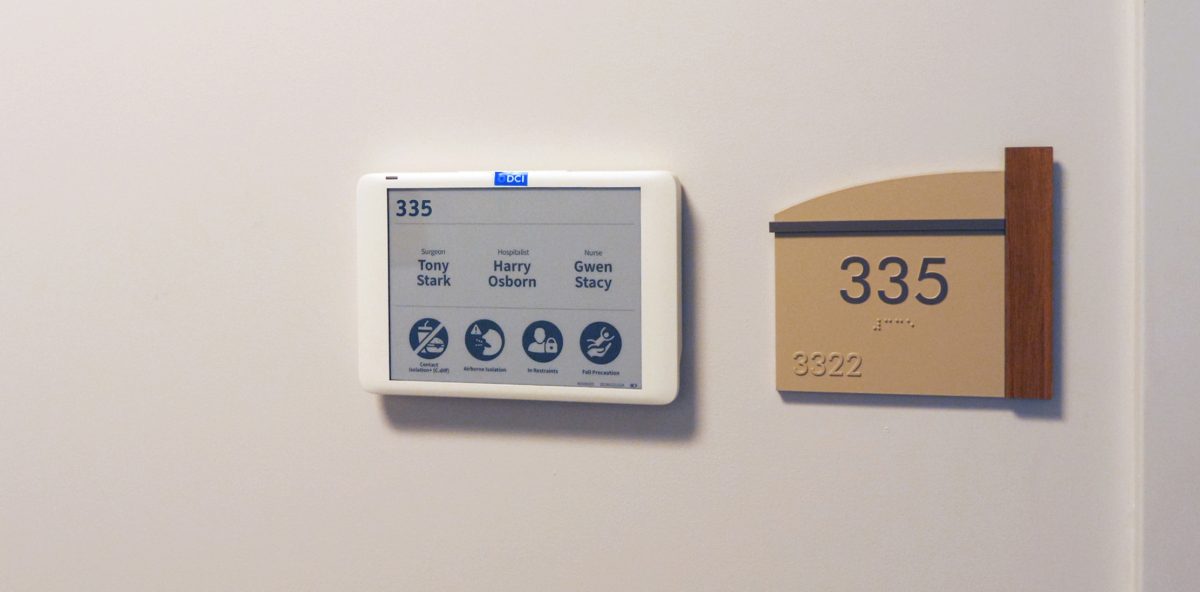
E-paper Screens Used As Patient Room Digital Signage In Florida Hospital
August 14, 2019 by Dave Haynes
Using screens as digital meeting room signs has turned into a big business, with dozens of companies offering a smarter way to designate whether a meeting space is occupied or booked, and by whom.
There’s another very different scenario where digital signs make a lot of sense outside of rooms, and that’s in medical centers.
A company called DCI, which is owned by the Taiwanese contract manufacturing giant Foxconn, has worked with another Taiwan company – E Ink – on e-paper screens for health care settings.
The Patient Information Display (PID) and the Room Information Display (RID) created by DCI replace handwritten whiteboards outside of rooms with low-power screens that pull essential information from the Electronic Health Record (EHR) system. The set-up is installed at Landmark Hospitals in Naples, Florida.
The information on the screens includes who the caregivers are, and flags things like precautions. They get updated wirelessly.
DCI, in a press release, makes the argument that the e-paper solutions for PID and RID offer a 21st century solution to the age-old problem of communication errors. A 2015 report conducted by CRICO strategies, a division of the Risk Management Foundation of the Harvard Medical Institutions, studied the relationship between malpractice risks and communication errors. The report found that an estimated 30 percent of malpractice cases that occurred between 2009 and 2013 resulted from communication errors. In this study, 44 percent of those communication error- and malpractice-related cases resulted in either serious harm to the patient or the patient’s death. It was also reported that on average, caregivers waste 45 minutes per day due to inefficient communication systems, which costs the average U.S. hospital $1 million USD annually. Additionally, Accenture reported in 2017 that U.S. hospitals spend about $12 billion USD a year due to poor communication.
“The Patient and Room Information Displays have the potential to prevent medical errors by displaying information such as a DNR order and allergies,” says Sara LaPorte, VP of Nursing at Landmark Hospitals. “Since the displays are wirelessly and continuously updated, our nursing staff saves time doing manual updates and can focus on care of the patient, creating a better overall experience.”
I like this, and the screens make a lot of sense. The concept is not entirely new – but in the past, tablets and small LCD screens have been used at doorways to tie in to patient management systems.
Capital Networks, for example, worked with Humber River Hospital in Toronto to put screens all through its state-of-the-art new facilities, including at patient rooms doorways.
The difference here, of course, is the “green” minimal power consumption aspect of using e-paper displays,.




Hello. My name is Lucille Chee, I work Phoenix Indian Medical Center Emergency Department. We are looking for new signs for exam doors. Digital sounds nice also we do have HER.